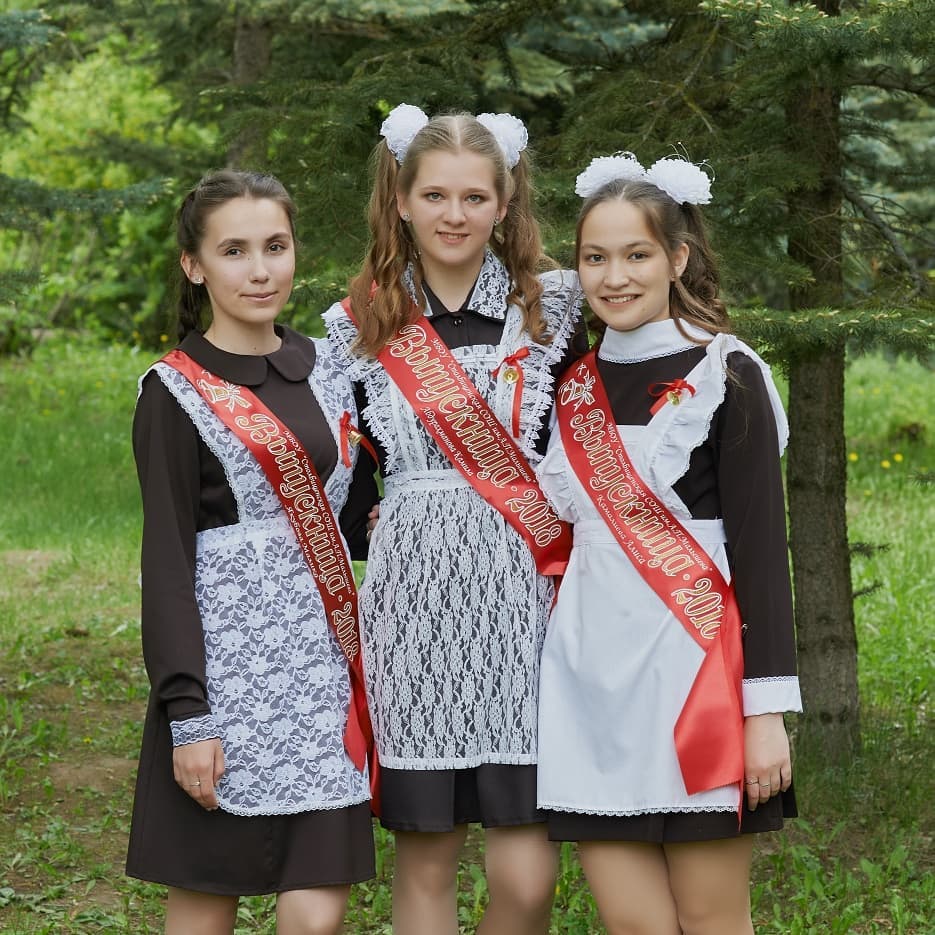Over the past two centuries, school uniforms have become an integral part of the wardrobe of several generations of Russian children. It first appeared thanks to Emperor Nicholas I, who signed the “Regulations on Civil Uniforms” in 1834. For 83 years, it was the “identifying sign” of the young elite - high school students from wealthy families. The Soviet period of distribution of student uniforms was twice as modest - only 40 years. However, all children aged 7 to 17 years wore it, regardless of the social status and financial situation of the family.
What uniforms did Soviet schoolchildren wear?
After the October Revolution of 1917, formal suits and dresses for students disappeared for 30 long years. And the point is not only that gymnasium clothing was considered an old-regime relic. In Soviet Russia, after the introduction of a program for the universal elimination of illiteracy, even the poorest segments of the population sat down at their desks. In families where they did not eat bread every day, they simply could not afford to sew expensive work clothes. Only in 1948 was it decided to introduce a uniform school uniform throughout the USSR.
What did girls wear to school?
The student of the late 1940s was surprisingly similar to a student of the Smolny Institute of the early 20th century. The uniform consisted of a tandem of a brown dress with a black apron, which was replaced by a white apron on holidays. The dullness of the image was diluted by lace collars and cuffs, which were renewed as they became dirty. They were torn off, washed, ironed, and then sewn by hand in their original place. On my feet I wore cotton stockings, held on by incredible elastic bands that were in danger of slipping down. The hairstyle was also “formal”: two braids, sometimes twisted into bagels or shaped like a basket. The composition was crowned with bows to match the apron.

Only in the 60s, during the Khrushchev Thaw, were relaxations made: it was allowed to have short haircuts, as well as wear knee socks and tights. Otherwise, girls' uniforms did not change until the early eighties. Then they began to sew blue suits for high school girls. It included:
- pleated skirt;
- vest;
- a jacket under which the girls wore a white blouse.

@myrussia.life
But such clothes were available only to residents of large cities. In the outback they still wore a brown dress with an apron. True, the style began to change: the bottom could be pleated and slightly open the knees.
In a family, a dress was often passed down from the eldest daughter to the youngest. The fabric used for it was wool - itchy but durable, and it only rubbed on the elbows. Mom cut off the sleeves, sewed on a lace collar and cuffs, ironed them - and the outfit was ready for the new school year.
At the same time, a real boom in exclusive aprons began. They were made from guipure, gauze, cambric and brocade, and crocheted. Even wedding dresses were used as raw materials, because every girl wanted to be attractive.
Student suit for a boy in the USSR
It underwent the greatest number of reforms and at first the innovations affected only the youngest students.
On September 1, 1948, first-graders from all over the country came to the line in the same uniform. The image consisted of several components:
- gray trousers;
- gymnast;
- black belt with metal buckle;
- cap;
- black or brown boots.

@i.pinimg.com
On holidays, a white one was sewn onto the main dark collar. In 1954, along with the tunic, a blue jacket appeared. High school students wore a plain jacket with a light shirt. Particularly fashionable in the fifties was a short windbreaker with a zipper and a turn-down collar.
The range of hairstyles was minimal: elementary school students had their heads shaved, middle school children were left with only bangs. And only the older guys could cut their hair the way they wanted.
In 1962, the boys were dressed in the latest English fashion: a gray straight jacket with small lapels, a white shirt and trousers with creases.
In 1975, a blue “two-piece” appeared: trousers, jacket (for younger ones) or blazer (for older ones). The style of the jacket, made of wool blend fabric, resembled denim. The sleeve was decorated with a PVC emblem depicting an open book. The shirt had to be white for special occasions, on other days any color, but always plain. Wearing athletic shoes with a suit was not permitted.

@ic.pics.livejournal.com
And of course, the main attributes, depending on age, were badges: October, Pioneer, Komsomol, and also a red tie.
The school uniform lasted until the end of the eighties. Four years after the start of perestroika, wearing it became optional in high schools, and in 1992 it was officially abolished.Currently, educational institutions themselves set requirements for student clothing. Society has an ambiguous attitude towards school uniforms. Some believe that it disciplines and does not distract children from their studies. Others – which depersonalizes, turning individuals into “gray mass”. But no matter how much they criticize the Soviet era and the school uniform of those years, it has long become a symbol. After all, every year thousands of graduates dress up for their last school bell in a brown dress with a white apron. And that's worth something.

@battalovakamilka


 17
17





Uniforms for boys appeared in 1954, and not in 1948!
The shape was good and very reliable. The material is very strong. I remember how we, the high school students on duty, periodically filmed first-graders hanging by their pants from the fence bars. They tried to climb a tree or climb over a fence. You take it off, put it upright, and shake out not a single hole in your pants. A second, and he had already run away to continue his hooliganism. “Electrobrooms”, damn it :)